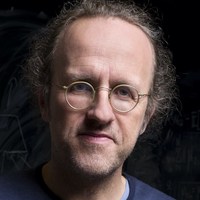Model based nonlinear image reconstruction methods for MRI [3] are at the heart of modern reconstruction techniques (e.g.compressed sensing [6]). In general, models are expressed as a matrix equation where y and u are column vectors of k-space and image data, X model matrix and e independent noise. However, solving the corresponding linear system is not tractable. Therefore fast nonlinear algorithms that minimize a function wrt.the unknown image are the method of choice: In this work a model for gradient echo EPI, is proposed that incorporates N/2 Ghost correction and correction for field inhomogeneities. In addition to reconstruction from full data, the model allows for sparse reconstruction, joint estimation of image, field-, and relaxation-map (like [5,8] for spiral imaging), and improved N/2 ghost correction.
| Author(s): | Blecher, W. and Pohmann, R. and Schölkopf, B. and Seeger, M. |
| Journal: | Magnetic Resonance Materials in Physics, Biology and Medicine |
| Volume: | 24 |
| Number (issue): | Supplement 1 |
| Pages: | 493-494 |
| Year: | 2011 |
| Month: | October |
| Day: | 0 |
| Bibtex Type: | Poster (poster) |
| Digital: | 0 |
| DOI: | 10.1007/s10334-011-0268-5 |
| Electronic Archiving: | grant_archive |
| Event Name: | 28th Annual Scientific Meeting ESMRMB 2011 |
| Event Place: | Leipzig, Germany |
| Links: | |
BibTex
@poster{BlecherPSS2011,
title = {Model based reconstruction for GRE EPI},
journal = {Magnetic Resonance Materials in Physics, Biology and Medicine},
abstract = {Model based nonlinear image reconstruction methods for MRI [3] are at the heart of modern reconstruction techniques (e.g.compressed sensing [6]). In general, models are expressed as a matrix equation where y and u are column vectors of k-space and image data, X model matrix and e independent noise. However, solving the corresponding linear system is not tractable. Therefore fast nonlinear algorithms that minimize a function wrt.the unknown image
are the method of choice: In this work a model for gradient echo EPI, is proposed that incorporates N/2 Ghost correction and correction for field inhomogeneities. In addition to reconstruction from full data, the model allows for sparse reconstruction, joint estimation of image, field-, and relaxation-map (like [5,8] for spiral imaging),
and improved N/2 ghost correction.},
volume = {24},
number = {Supplement 1},
pages = {493-494},
month = oct,
year = {2011},
slug = {blecherpss2011},
author = {Blecher, W. and Pohmann, R. and Sch{\"o}lkopf, B. and Seeger, M.},
month_numeric = {10}
}

